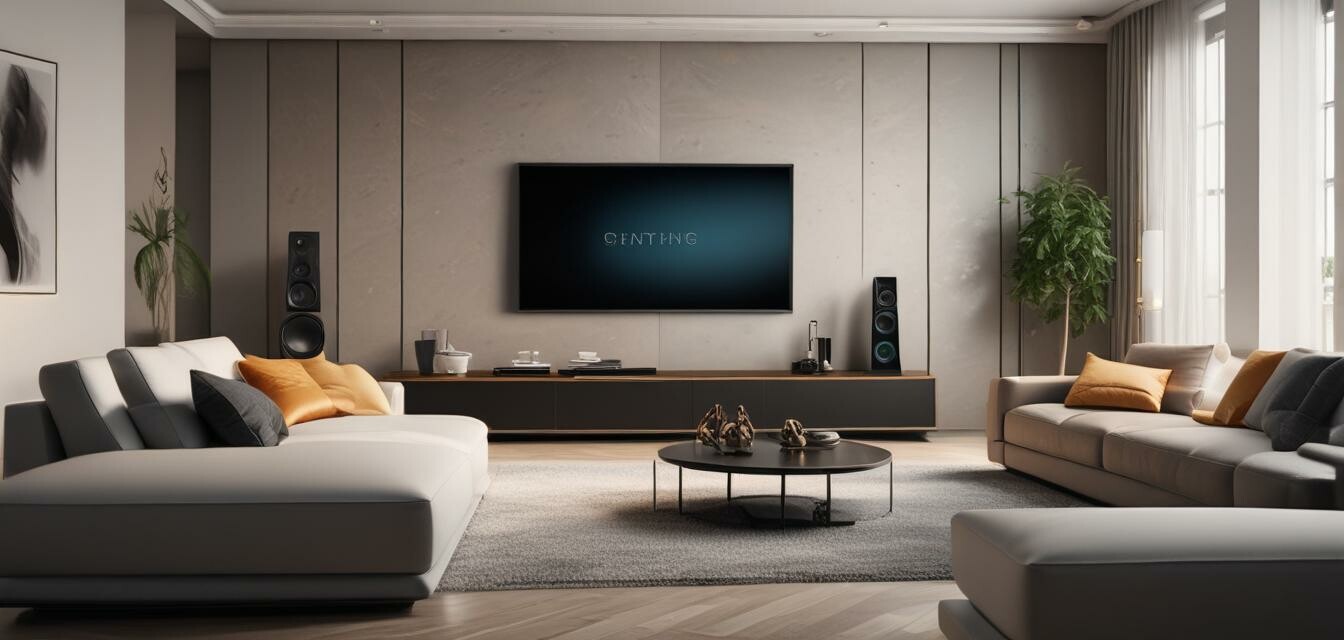
The Shift Towards Wireless Home Theater Systems
Key Takeaways
- Wireless systems offer greater flexibility and reduced clutter compared to wired setups.
- Despite their advantages, wireless systems can face challenges such as connectivity issues and audio delays.
- Choosing the right wireless technology is crucial for optimal performance in high-end installations.
As technology evolves, many homeowners are contemplating the transition from traditional wired systems to the more contemporary wireless home theater setups. This shift is driven by a desire for cleaner aesthetics, ease of installation, and flexibility in arranging devices. In this article, we will dive into the advantages and challenges associated with wireless home theater systems.
Advantages of Wireless Home Theater Systems
- Flexibility in setup: Wireless systems allow for more freedom in arranging speakers and components without being constrained by cables.
- Reduced clutter: The absence of wires leads to a cleaner, more organized space, enhancing the aesthetic appeal of your home.
- Easy installation: Wireless systems often require less effort to set up, eliminating the need to run cables through walls or furniture.
- Advanced technologies: Many wireless systems support cutting-edge audio formats, ensuring you stay up-to-date with the latest technology.
Comparing Wired and Wireless Systems
| Feature | Wired Systems | Wireless Systems |
|---|---|---|
| Installation | Complex, may require professional assistance | Easier, can often be done by the user |
| Audio Quality | Consistent, high-quality sound | Dependent on signal strength and interference |
| Flexibility | Limited by cable length and placement | Free to arrange based on preference |
| Clutter | Can be messy with numerous cables | Clean and minimalist appearance |
Challenges of Wireless Home Theater Systems
While wireless technology has greatly improved, it is not without its challenges. Here are some of the common issues:
- Connectivity Issues: Dependence on Wi-Fi can lead to disruptions if the signal is weak or interfered with.
- Audio Delays: Some wireless systems may experience latency, leading to a slight lag between video and sound.
- Interference: Other wireless devices in your home may cause interference, impacting performance.
- Higher Costs: Premium wireless systems can be more expensive than their wired counterparts.
Choosing the Right Technology
Finding the right wireless technology is essential for achieving optimal performance in your high-end home theater. Here are some options:
- Wi-Fi: Ideal for streaming high-quality audio with minimal latency.
- Bluetooth: Convenient for connecting mobile devices, but may have audio quality limitations.
- Wireless HDMI: Facilitates high-quality video and audio distribution without clutter.
Conclusion
The transition to wireless home theater systems presents both exciting opportunities and certain challenges. Homeowners must weigh the benefits of flexibility and aesthetics against potential connectivity issues and costs. As technology continues to advance, many consumers will find that a well-designed wireless setup can meet their needs while enhancing their entertainment experience. To learn more about setting up your system with minimal hassle, check out our setup tips for home theaters.
Pros
- Improved aesthetic appeal
- Flexible system configuration
- Less clutter due to fewer cables
- Easy integration with smart home technology
Cons
- Potential for signal interference
- Audio quality may vary
- Higher overall costs
- More complex troubleshooting
Stay Informed
For those interested in the latest trends and developments surrounding high-end home theater systems, explore our news and trends category. Here you can find informative articles on various advancements in the home audio industry.
Explore More
If you're looking to enhance your home theater experience further, check out our guides on speakers and sound systems, or browse our selection of projectors and screens that can complement your new wireless setup.

